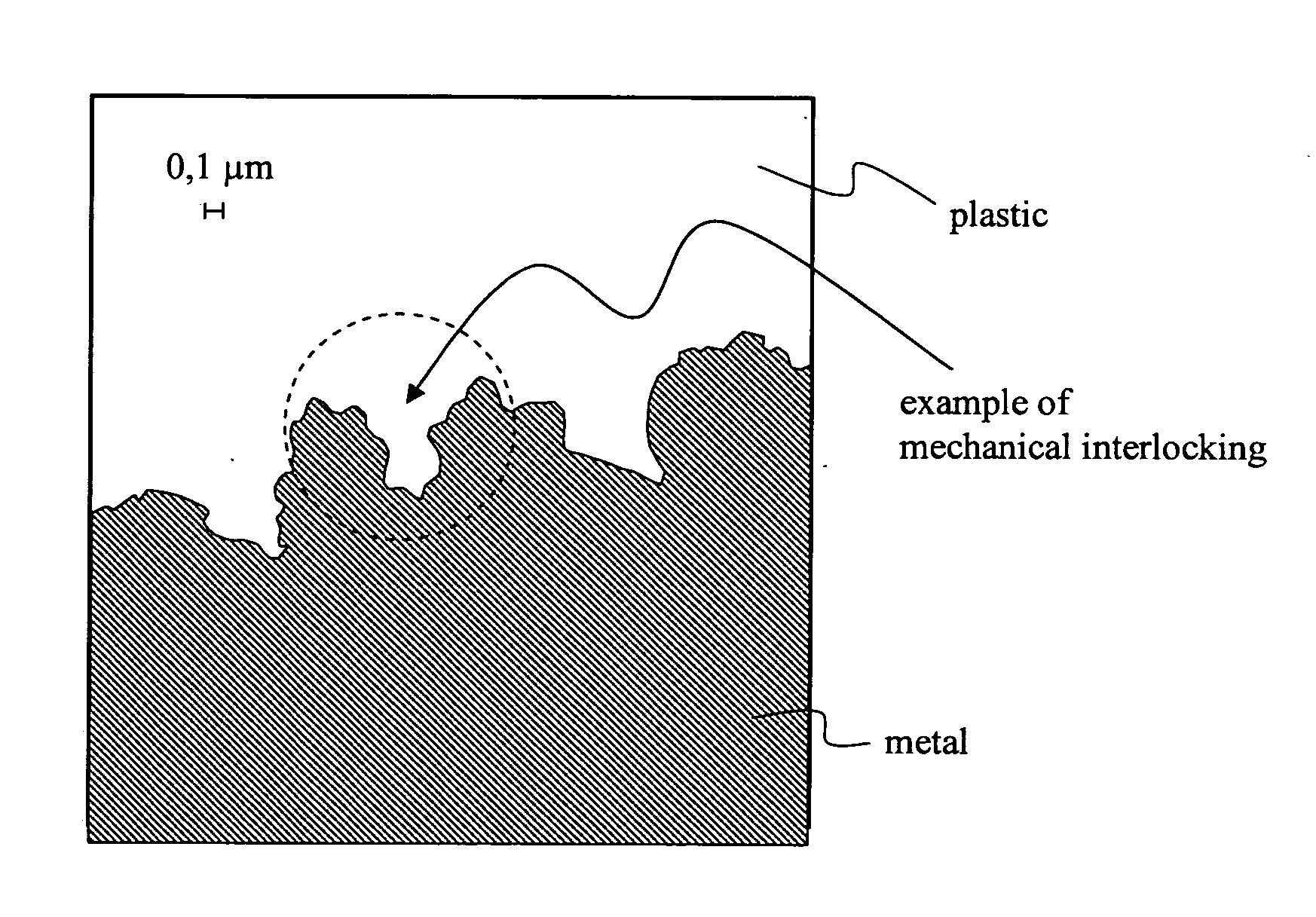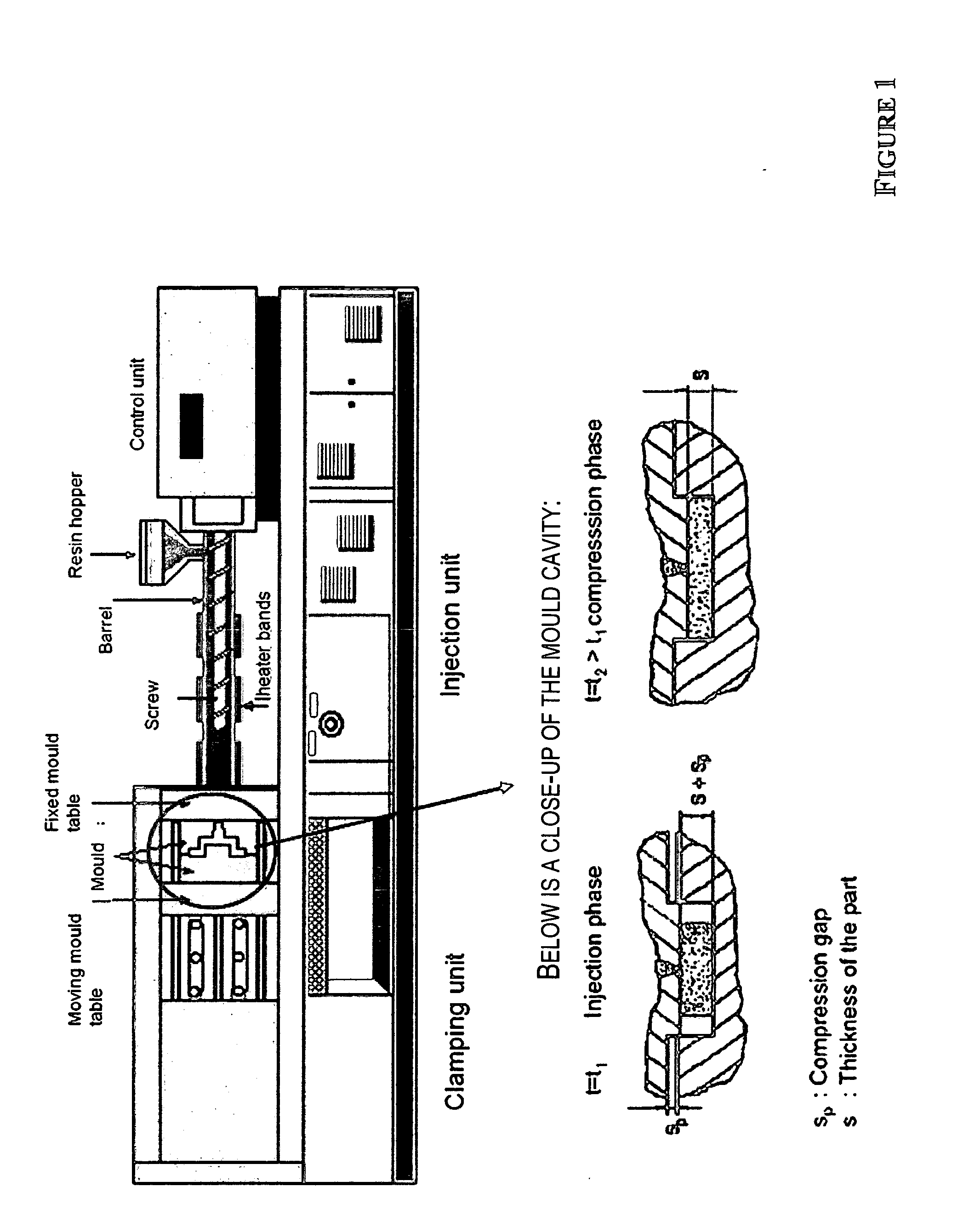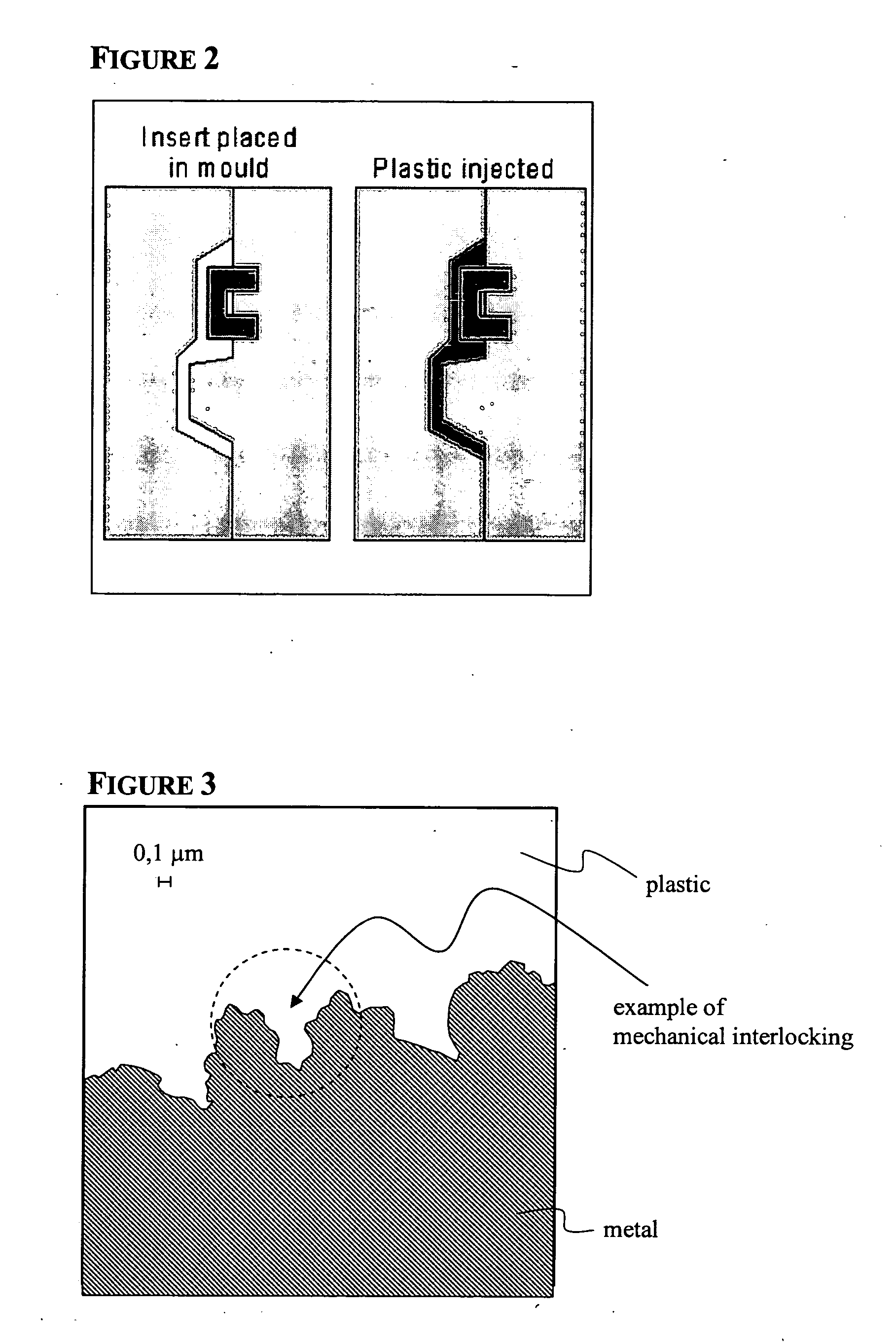Plastic-acceptor hybrid components
a technology of plastic acceptors and hybrid components, applied in the field of plastic acceptor hybrid components, can solve the problems of poor heat resistance, liquid adhesives that require bulky and expensive spraying equipment, and each adhesive employed to date comes with its own unique set of problems, so as to achieve less internal stresses and high bond strength
- Summary
- Abstract
- Description
- Claims
- Application Information
AI Technical Summary
Benefits of technology
Problems solved by technology
Method used
Image
Examples
example 1
[0050]In a first step a preformed steel part has been roughened by sand blasting to form micro-scale holes in an average depth of from 30 to 100 μm and width of from 15 to 30 μm. The surface structure has been checked by taking SEM-pictures (data not shown).
[0051]The preformed steel part has been inserted in an ICM tool as schematically depicted in FIG. 1 and a PBT melt has injected to the roughened surface after that compression / clamping phase has been started within a few seconds.
[0052]The cooled steel-PBT hybrid component has been subjected to a tension force by fixing the metal part and applying a slowly increasing mechanical pressure on the plastic part, wherein the direction of the applied force is substantially parallel to the surface of the metal part. In several tests it could be shown that PBT breaks at substantially the point at which the pressure has been applied, i.e. that the steel-PBT interface has the same or higher strength towards mechanical stresses than the PBT m...
example 2
[0053]According to the above mentioned example a steel-PPS hybrid component has been produced. Said hybrid component shows in case of application of breakage stress the same behaviour as steel-PBT hybrid component, indicating that the metal-plastic interface is more resistant towards stresses than the plastic part itself.
example 3 and 4
[0054]A preformed glass part of window grade has been roughened by sand blasting to form micro-scale holes in an average depth of from 30 to 100 μm and width of from 15 to 30 μm.
[0055]According to the previous examples PBT melt and PPS melt have been applied for the formation of PBT-glass and PPS-glass hybrid components. Also said hybrid components have been subjected to tension forces directed one time to the plastic part and the other time to the glass part. In both cases, plastic and glass parts have failed before breaking of the respective plastic-glass interfaces.
PUM
| Property | Measurement | Unit |
|---|---|---|
| Pressure | aaaaa | aaaaa |
| Depth | aaaaa | aaaaa |
| Force | aaaaa | aaaaa |
Abstract
Description
Claims
Application Information
 Login to View More
Login to View More - R&D
- Intellectual Property
- Life Sciences
- Materials
- Tech Scout
- Unparalleled Data Quality
- Higher Quality Content
- 60% Fewer Hallucinations
Browse by: Latest US Patents, China's latest patents, Technical Efficacy Thesaurus, Application Domain, Technology Topic, Popular Technical Reports.
© 2025 PatSnap. All rights reserved.Legal|Privacy policy|Modern Slavery Act Transparency Statement|Sitemap|About US| Contact US: help@patsnap.com



